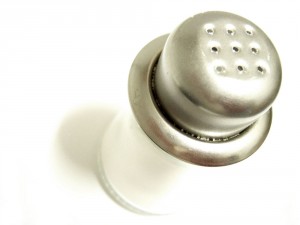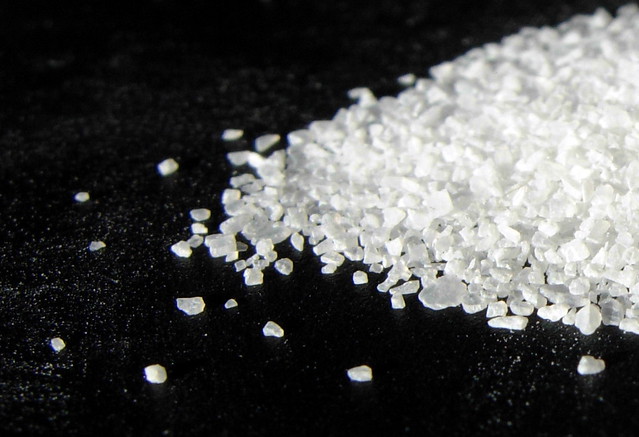 Sea salt vs. table salt: which do you choose? They are two of the most common salts used in your home kitchen (other than kosher salt). Both salts have the same nutritional value. You can argue about the differences in the minerals and iodine, etc. but in the end, they’re both sodium chloride crystals. Good ol’ NaCl.
Sea salt vs. table salt: which do you choose? They are two of the most common salts used in your home kitchen (other than kosher salt). Both salts have the same nutritional value. You can argue about the differences in the minerals and iodine, etc. but in the end, they’re both sodium chloride crystals. Good ol’ NaCl.
As a kid I remember going to a large salt mine and was amazed at the process that salt when through from start to finish, meaning earth to table. It really is amazing what the earth produces. It’s a good thing too, because without it some foods would be pretty bland! I hear from my non-American friends though that they think our food here in America is too salty. I guess that wouldn’t surprise me, I know a lot of people who over-salt their foods, and this rising generation seems to be raised on potato chips and popcorn. Well, that’s a little off topic–stay focused, Chris– salt is staple in any kitchen, and when it’s used correctly makes food tastes amazing!
But enough of the ranting, I’ve created just a short summary of the difference between sea salt and table salt that I think you’ll find helpful if you’re trying to figure out if you should use sea salt or the regular table salt. Keep in mind that these are short descriptions, and there’s gad’s more information out there on salt. If you have any questions, let me know in the comments and I’ll answer them for you.
Sea Salt
 (Photo: “Sea Salt” by Robbin Gheesling)
(Photo: “Sea Salt” by Robbin Gheesling)
Sea salt is quite truthfully salt from the sea and not just a catchy name for something it’s not (like “Chicken of the Sea” for tuna fish). It’s created through evaporation with little to no processing and is available in fine and coarse grains. I like using sea salt when I want a more subtle salty flavor. Because of its coarse grains, it is great for curing fish and other meats. The coarser grains absorb more of the meat’s moisture. It’s also great for brines. Sea salt doesn’t have iodine, but it’s not a huge issue as iodine is present in many other foods you eat. Some sea salt has a mixture of white and colored crystals.
Table Salt
 (Photo: “Table Salt” by Stuart Williams)
(Photo: “Table Salt” by Stuart Williams)
Table salt is the salt you’re probably the most used to. It’s fine-grained and is mined from underground salt deposits. It’s sent through a refining process to purify and ready it for your table. Often an anti-caking agent is used to keep it from clumping together. You can buy iodized or non-iodized table salt; iodine is necessary for normal thyroid function. But like I said earlier, if you buy the non-iodized table salt, it’s not the end of the world because iodine exists in many other foods. I like to use table salt in most of my cooking because the small salt grains dissolve quickly.
Read about kosher salt by clicking here.
I use kosher salt in all my cooking and some table usage. I like the less subtle flavor of it, as with sea salt.
I like your site. Just got around to looking at it. Will look in more depth later. 🙂
I considered adding kosher salt to this post, but decided against it. I’ll write up a little post and add it to the site. Thanks for checking out the site, I’m glad you like it.